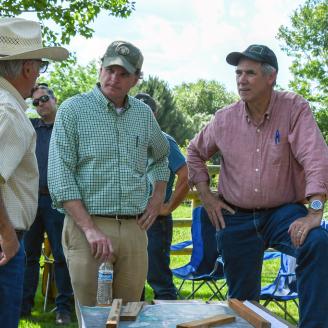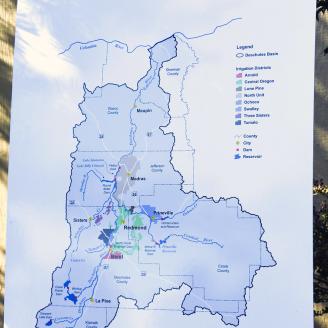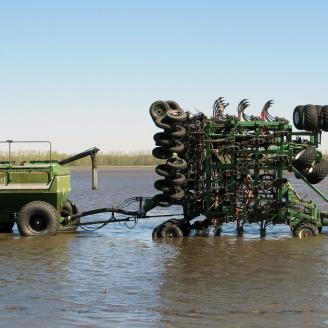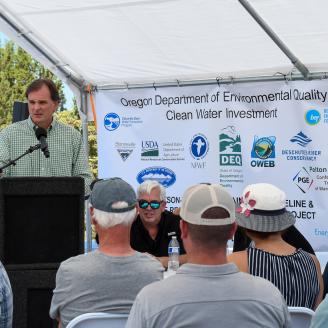
About the Project

Who's involved?
The Murray County Conservation District and United States Department of Agriculture Natural Resources Conservation Service (NRCS) in Oklahoma are developing the Rock Creek Site 12 Watershed Project.

What's Happening?
The agency is studying the alternatives to improve the Rock Creek Site 12 Dam in Murray County and the impact the improvements may have on the environment and the community.

Why?
The dam, originally built in 1961 to help protect against flooding, is no longer up to the performance or safety standards required by the state and NRCS. The plan is intended to study how to best remedy that situation.

Why?
The first public meeting will be held on Tuesday, October 29, 2024, from 4 p.m. to 6 p.m. at the USDA-NRCS Murray County Field Office (3490 HWY 7 W) in Sulphur. The meeting will be formatted as an open house; therefore, the public is welcome to stop by anytime during its two-hour timeframe. No formal presentations will be given. Alternative solutions will be developed based on that input. They will be available for public comment and consideration afterward. The final preferred proposed alternative and the entire plan and environmental document will then be available for public comment.

Where?
Public Meetings
Public meetings are a critical part of hearing all the voices with input on this project. Check below for notices of public meetings and links to information shared at previous public meetings.
The first public meeting will be held on Tuesday, October 29, 2024, from 4 p.m. to 6 p.m. at the USDA-NRCS Murray County Field Office (3490 HWY 7 W) in Sulphur. The meeting will be formatted as an open house; therefore, the public is welcome to stop by anytime during its two-hour timeframe. No formal presentations will be given.
Any comments or questions regarding the project should be sent,
prior to November 15, 2024, to:
Where Are We in the Process?
The watershed planning process is established by federal statute and follows a specific procedure. The ultimate goal is to find a proposed alternative out of all possible solution alternatives that is preferred based on technical, economic, cultural, social, and ecological findings The proposed alternative will be the reasonable alternative that maximizes net public benefits to society. That occurs in four phases:
Identifying problems and determining objectives- in progress
Inventorying Resources and analyzing data
Alternative formulation, evaluation and decision
Preparation of the plan-ed

